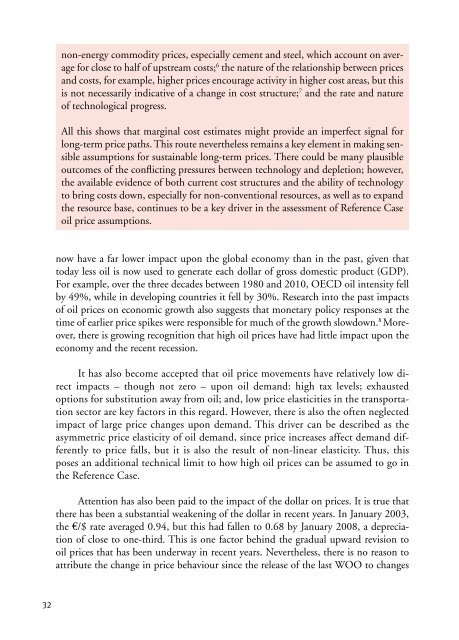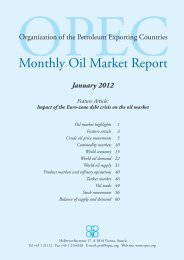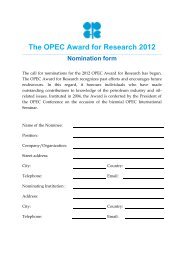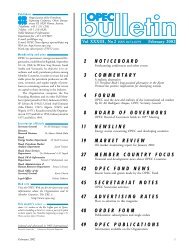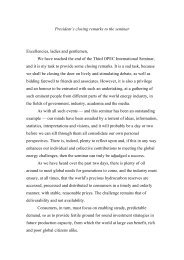Section One
Section One
Section One
Create successful ePaper yourself
Turn your PDF publications into a flip-book with our unique Google optimized e-Paper software.
32<br />
non-energy commodity prices, especially cement and steel, which account on average<br />
for close to half of upstream costs; 6 the nature of the relationship between prices<br />
and costs, for example, higher prices encourage activity in higher cost areas, but this<br />
is not necessarily indicative of a change in cost structure; 7 and the rate and nature<br />
of technological progress.<br />
All this shows that marginal cost estimates might provide an imperfect signal for<br />
long-term price paths. This route nevertheless remains a key element in making sensible<br />
assumptions for sustainable long-term prices. There could be many plausible<br />
outcomes of the conflicting pressures between technology and depletion; however,<br />
the available evidence of both current cost structures and the ability of technology<br />
to bring costs down, especially for non-conventional resources, as well as to expand<br />
the resource base, continues to be a key driver in the assessment of Reference Case<br />
oil price assumptions.<br />
now have a far lower impact upon the global economy than in the past, given that<br />
today less oil is now used to generate each dollar of gross domestic product (GDP).<br />
For example, over the three decades between 1980 and 2010, OECD oil intensity fell<br />
by 49%, while in developing countries it fell by 30%. Research into the past impacts<br />
of oil prices on economic growth also suggests that monetary policy responses at the<br />
time of earlier price spikes were responsible for much of the growth slowdown. 8 Moreover,<br />
there is growing recognition that high oil prices have had little impact upon the<br />
economy and the recent recession.<br />
It has also become accepted that oil price movements have relatively low direct<br />
impacts – though not zero – upon oil demand: high tax levels; exhausted<br />
options for substitution away from oil; and, low price elasticities in the transportation<br />
sector are key factors in this regard. However, there is also the often neglected<br />
impact of large price changes upon demand. This driver can be described as the<br />
asymmetric price elasticity of oil demand, since price increases affect demand differently<br />
to price falls, but it is also the result of non-linear elasticity. Thus, this<br />
poses an additional technical limit to how high oil prices can be assumed to go in<br />
the Reference Case.<br />
Attention has also been paid to the impact of the dollar on prices. It is true that<br />
there has been a substantial weakening of the dollar in recent years. In January 2003,<br />
the €/$ rate averaged 0.94, but this had fallen to 0.68 by January 2008, a depreciation<br />
of close to one-third. This is one factor behind the gradual upward revision to<br />
oil prices that has been underway in recent years. Nevertheless, there is no reason to<br />
attribute the change in price behaviour since the release of the last WOO to changes


